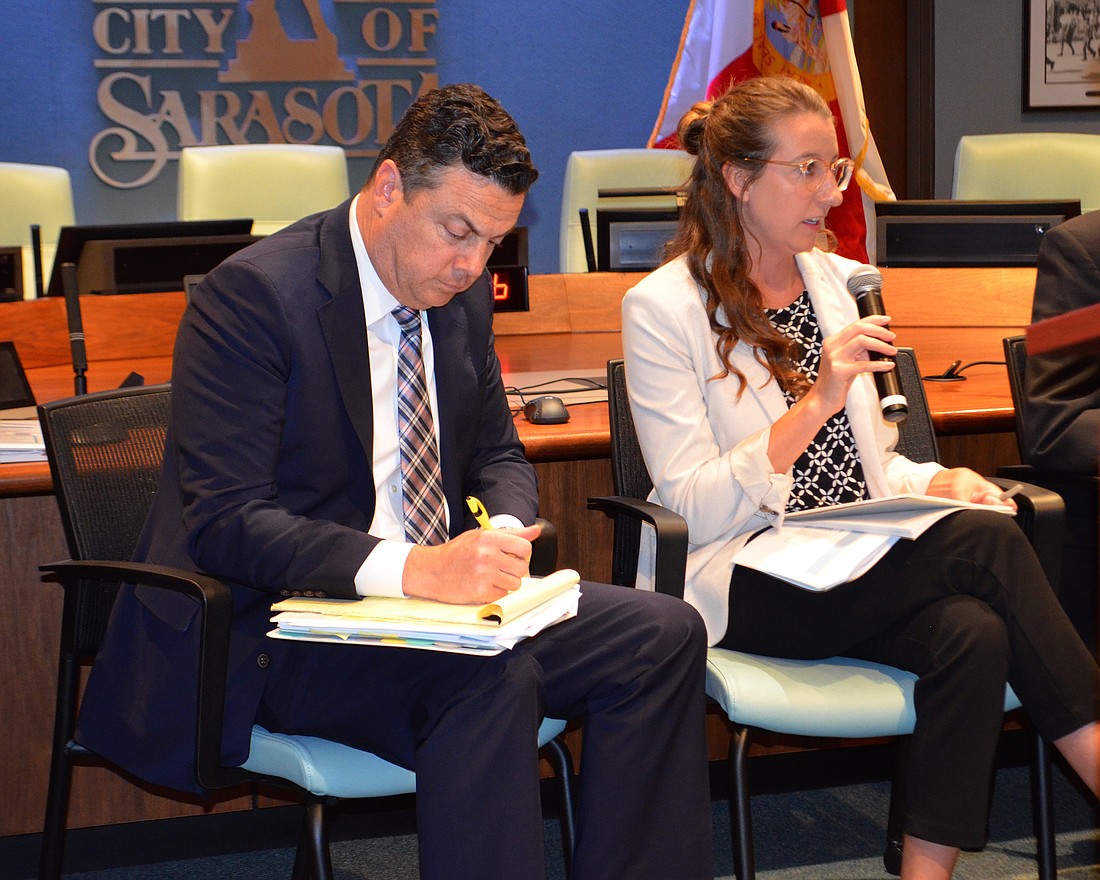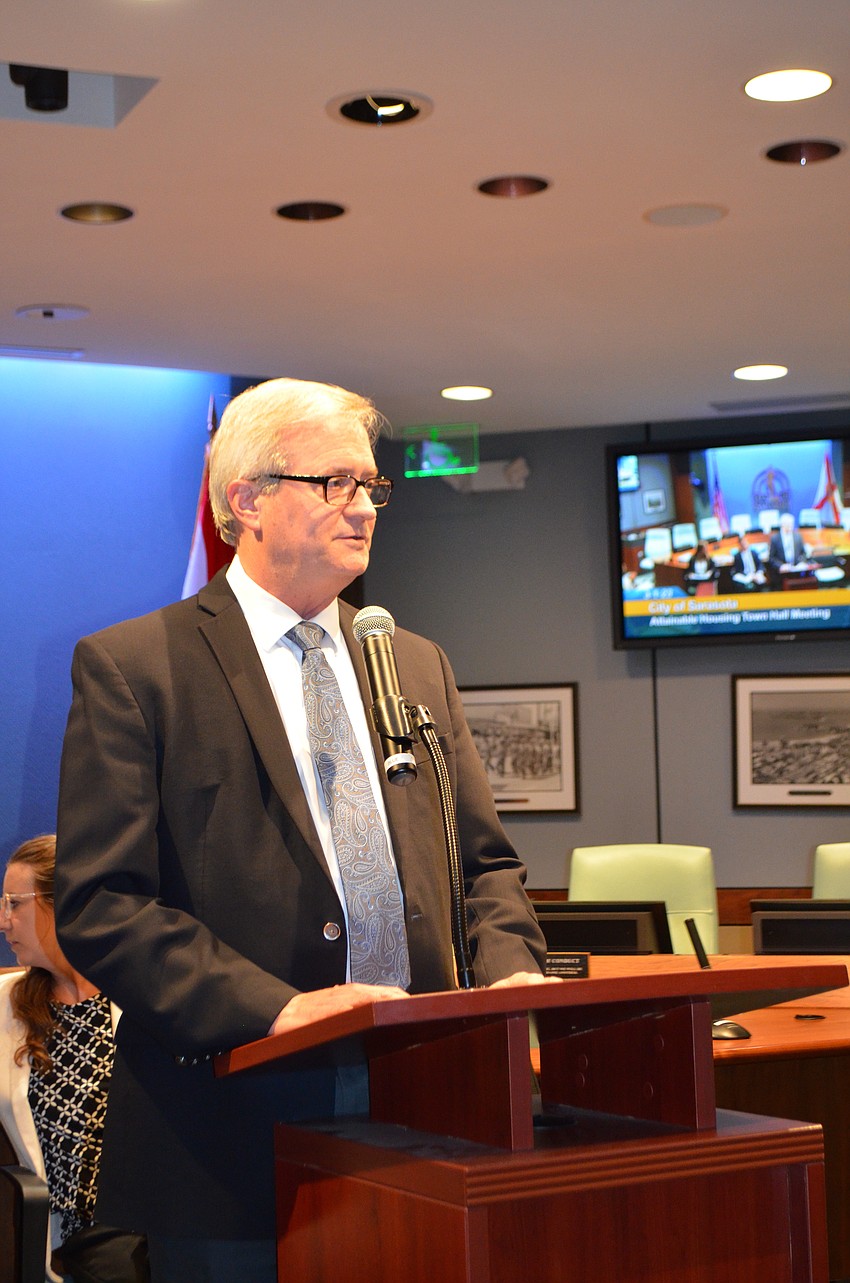- May 13, 2025
-
-
Loading

Loading

In the two months since the city of Sarasota Planning Department held its first of two affordable housing town hall sessions, staff refined zoning text amendments intended to incentivize the development of affordable and attainable units in the downtown zoning districts.
At its follow-up Affordable Housing Town Hall on March 1, staff presented details of the changes it will propose to the City Commission. The commission made way for the ability to make changes by amending the comprehensive plan in fall 2022. This first round of zoning changes applies only to the four downtown zoning districts. Once adopted, staff will turn its attention to zoning districts along the city’s commercial corridors where redevelopment opportunities exist.
The program is voluntary for developers.
Attempting to allay at the onset a recurring concern over the changes, which emphasize density bonuses in exchange for providing affordable and attainable priced residential units, Director of Planning Steve Cover addressed building height.
“There’s always been the issue of height that's been brought up throughout this initiative,” Cover said. “In this proposal there are no changes to height anywhere in the downtown, so I just want to make that clear.”
There will be changes in density bonuses, relaxed parking requirements and other developer incentives. If approved, the incentives in the downtown zoning districts are available only if attainable housing is provided on-site for a minimum of 30 years. Density bonuses include:
Standards for the attainable and affordable units will:
For developers who take advantage of the program, the percentage of affordable and attainable units is legally binding for 30 years and runs with the deed. The proposed ordinance will include non-compliance enforcement actions available to the city against the developer or future owners of the properties.
Some attendees at the town hall suggested requiring a minimum of 15% of the bonus units was too generous to developers, a standard that results in 11.5% of an overall development priced in the affordable and attainable ranges.
Cover countered that in the existing Rosemary Residential Overlay District, which was established in 2019, 25% of the bonus units are required to be designated as attainable in order to qualify. That experiment has yielded no results.

“What we've seen since that was adopted is really no activity,” Cover said. “What has been recommended by the Affordable Housing Advisory Committee, also the blueprint for workforce housing, is 15%. And so what we're proposing is that 15% of the additional bonus units be required for attainable housing.”
That means, for example, should a builder add 100 units to a project to take advantage of the density bonus, 15 must be priced in the affordable and attainable range. In addition, at least one-third must be priced at 80% or below area median income, at least one-third 81%-100%, and no more than one-third 101%-120%.
Excluding the barrier islands, the current median rent in the city is $2,500 per month. For an individual at 100% AMI earning $60,500 per year, the recommended maximum rent, including utilities, is $1,513 per month. For someone earning 120% AMI, $72,600 per year, the maximum rent is $1,815, all-inclusive.
For a family of four earning 100% AMI, or $90,400 per year, the recommended maximum rent is $2,260. For a family earning 120% AMI, $103,560 per year, the maximum rent is $2,589, $89 above the median rent in the city.
Those figures do not permit workforce individuals and families to afford to live in the city. And those earning less than 100% AMI — typically firefighters, school teachers, restaurant workers, etc. — cannot affordably live anywhere near where they work. That results in labor shortages in the service industries used by those earning well above 120% AMI.
The text amendments include not only rental apartments, but also for-sale units. Individual owners who hold those homes for 30 years will be permitted to sell the property at market rate. They can also sell earlier at market rate, but a sliding scale of net proceeds based on years of ownership will go to the city’s Affordable Housing Trust Fund to help build more units. For example, if an affordable unit is sold after 10 years of ownership, the seller may keep one-third of the net equity, the remaining two-thirds deposited into the fund. At 15 years it’s a 50-50 split, and so on.
That requirement is legally binding and will be recorded with the deed.
With the city’s household makeup of 30.5% one person, 47.1% two people and 22.4% three or more, the emphasis should be on one-bedroom affordable and attainable units, staff said.
“The demographics of our area are 82% of households are without children and 77% are one- and two-person households,” said Senior Planner Briana Dobbs. “We really have a need for one-bedroom units. We've also had heard from the Sarasota Housing Authority that the longest wait list for units are one-bedrooms, so we want to make sure that we are providing for those.”
Before implementation, the text amendments must be approved by the Sarasota City Commission.